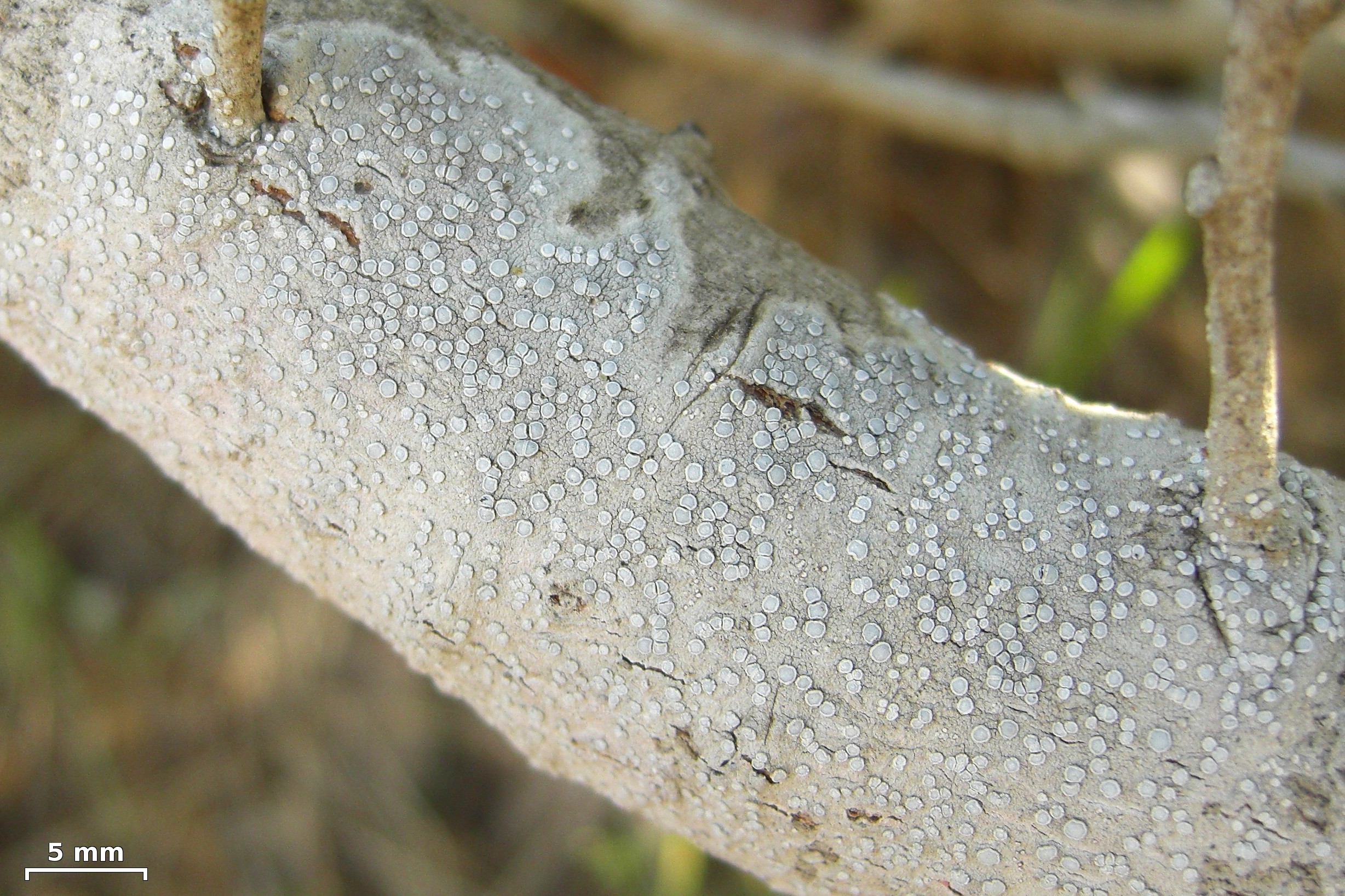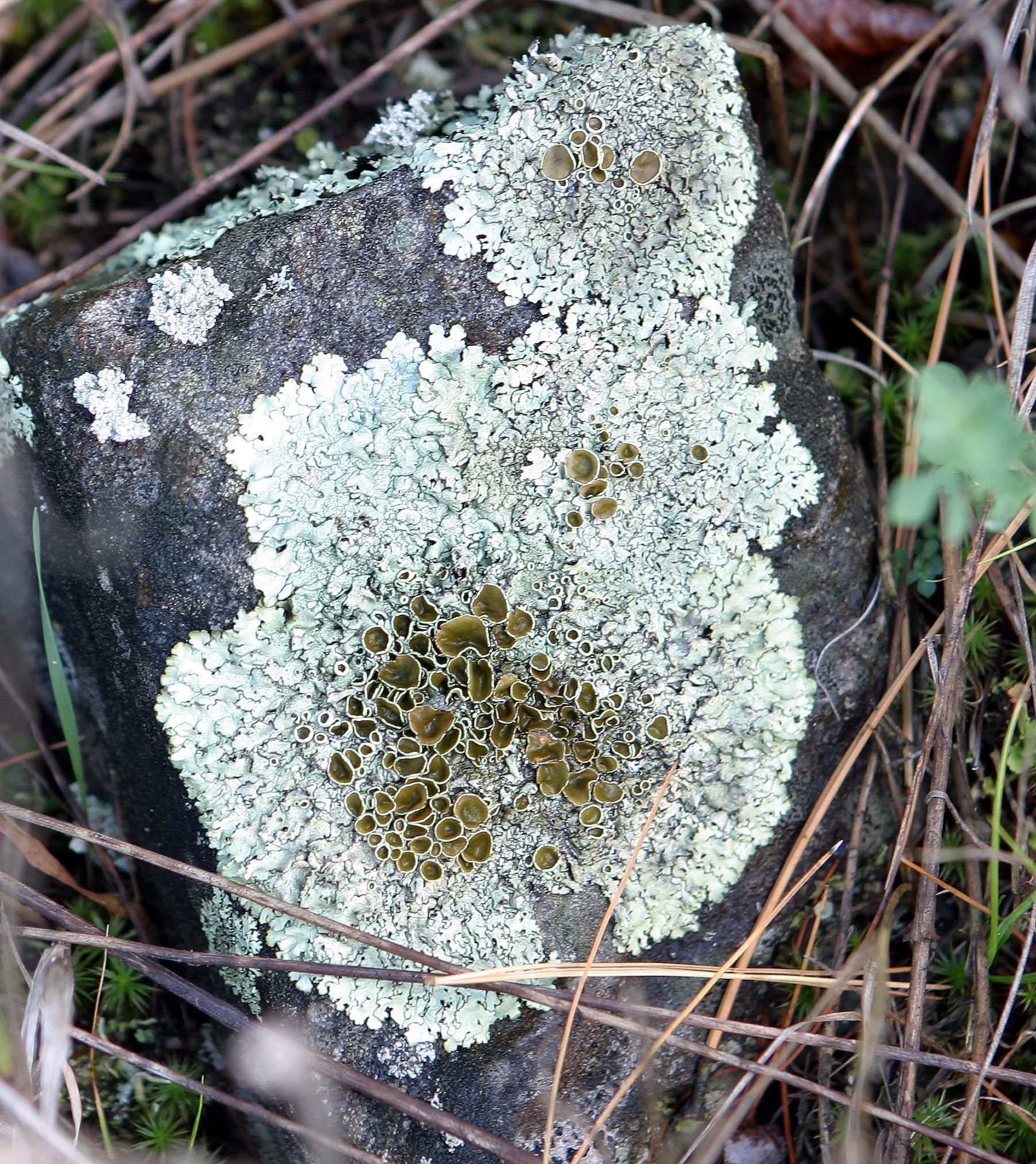|
Opegraphaceae
''Opegraphaceae'' is a family of lichen-forming and lichenicolous fungi in the order Arthoniales. It was originally proposed by German lichenologist Ernst Stizenberger in 1862. It fell into disuse, but was resurrected in a molecular phylogenetic study of the order Arthoniales published in 2010. It now includes taxa that were previously referred to the family Roccellaceae, its sister group. Description Most taxa in the family have a crustose thallus, although in rare cases it is fruticose. The lichens typically grow on bark, wood, or rocks. Some members, such as those in the genus '' Fouragea'', grow on leaves. The family has a cosmopolitan distribution, but is predominant in tropical and semi-arid subtropical regions. The photobiont partner of Opegraphaceae is a member of the green algal genus '' Trentepohlia''. A variety of secondary chemicals have been identified in this family. The most common types are depsides, depsidones, dibenzofurans, and anthraquinones. Genera , Sp ... [...More Info...] [...Related Items...] OR: [Wikipedia] [Google] [Baidu] |
Opegrapha
''Opegrapha'' is a genus of mostly lichen-forming fungi in the family Opegraphaceae. These lichens form crusty patches on bark, rock, or other lichens, and are easily recognized by their distinctive black, slit-like or rounded fruiting bodies that look like tiny scribbles or dashes on the surface. The genus includes more than 100 species found worldwide, with most partnering with orange-pigmented green algae, though some live as parasites on other lichens. Description ''Opegrapha'' species form a crust-like thallus that adheres tightly to bark, rock or even the surface of other lichens. This crust may be paper-thin or rather thick and is often cracked into a mosaic of small . Colours range from chalk white through shades of grey and mauve to dark brown or olive-green, and a narrow dark sometimes outlines individual colonies. Most members partner with the orange-pigmented green alga '' Trentepohlia'', but a few live parasitically on lichens that employ different algal partners ... [...More Info...] [...Related Items...] OR: [Wikipedia] [Google] [Baidu] |
Arthoniales
The Arthoniales is the second largest order of mainly crustose lichens, but fruticose lichens are present as well. The order contains around 1500 species, while the largest order with lichenized fungi, the Lecanorales, contains more than 14000 species. Classification The Arthoniales is one of two orders of the class Arthoniomycetes within the phylum Ascomycota. The order includes seven families ( Andreiomycetaceae, Arthoniaceae, Chrysotrichaceae, Lecanographaceae, Opegraphaceae, Roccellaceae and Roccellographaceae). Lecanographaceae, Roccellographaceae, Opegraphaceae and Roccellaceae are well-supported families within Arthoniales, and they were circumscribed in 2011. Andreiomycetaceae was described as a new family by Hodkinson and Lendemer in 2013. The Arthoniales is the sister group to Dothideomycetes. Figure 1. Cladogram of the Arthoniales, rooted with ''Curvularia brachyspora'', ''Cudonia circinans'' and ''Seynesia erumpens'' as the outgroup. The cladogram shows the ... [...More Info...] [...Related Items...] OR: [Wikipedia] [Google] [Baidu] |
Roccellaceae
The Roccellaceae are a family (biology), family of mostly lichen-forming fungi in the order Arthoniales, established by the French botanist François Fulgis Chevallier in 1826. Species in the family exhibit various lichen growth forms, growth forms, including crustose lichen, crustose and fruticose lichen, fruticose (shrub-like) thallus, thalli, and diverse reproductive structures. Roccellaceae species typically have disc-like () or slit-like () fruiting bodies, often with distinct blackened () margins. Molecular phylogenetics studies have revealed considerable genetic diversity and complex evolutionary histories within the family. Convergent evolution in the Roccellaceae has led to multiple independent developments of similar traits, particularly in lichen growth forms, growth forms. Molecular studies have divided the family into two main phylogenetic groups, each characterised by distinct internal structures. These findings have prompted major taxonomy (biology), taxonomic re ... [...More Info...] [...Related Items...] OR: [Wikipedia] [Google] [Baidu] |
Fouragea
''Fouragea'' is a genus of lichen-forming fungi in the family Opegraphaceae. It has nine species. Taxonomy The genus was originally circumscribed by Italian botanist Vittore Benedetto Antonio Trevisan de Saint-Léon in 1880, for the species ''Opegrapha filicina'', first described by Camille Montagne. Several features distinguished this lichen from the usual, bark-dwelling ''Opegrapha'' species: its slender , which are a result of its foliicolous lifestyle, the absence of a dark at the base, and the preference for ''Phycopeltis'' as a instead of '' Trentepohlia''. The genus was reinstated in 2014 to contain foliicolous (leaf-dwelling) ''Opegrapha'' species, following a molecular phylogenetics-led reorganisation of the order Arthoniales The Arthoniales is the second largest order of mainly crustose lichens, but fruticose lichens are present as well. The order contains around 1500 species, while the largest order with lichenized fungi, the Lecanorales, contains more than 140 ... [...More Info...] [...Related Items...] OR: [Wikipedia] [Google] [Baidu] |
Opegrapha Vulgata
''Opegrapha vulgata'' is a species of corticolous (bark-dwelling) script lichen in the family Opegraphaceae. It was first scientifically described by Swedish lichenologist Erik Acharius in 1798, as ''Lichen vulgata''. He transferred it to the genus ''Opegrapha'' in 1803. The lichen has a cosmopolitan distribution In biogeography, a cosmopolitan distribution is the range of a taxon that extends across most or all of the surface of the Earth, in appropriate habitats; most cosmopolitan species are known to be highly adaptable to a range of climatic and en ..., and grows on the bark of a wide variety of tree species. '' Opegrapha niveoatra'' is similar in appearance, but can be distinguished form ''O. vulgata'' by its longer, curved . '' O. lithygra'' is another lookalike, but it grows on rocks instead of bark. References {{Taxonbar, from=Q10581198 Opegraphaceae Lichen species Lichens described in 1798 Cosmopolitan lichens Taxa named by Erik Acharius ... [...More Info...] [...Related Items...] OR: [Wikipedia] [Google] [Baidu] |
Tropical
The tropics are the regions of Earth surrounding the equator, where the sun may shine directly overhead. This contrasts with the temperate or polar regions of Earth, where the Sun can never be directly overhead. This is because of Earth's axial tilt; the width of the tropics (in latitude) is twice the tilt. The tropics are also referred to as the tropical zone and the torrid zone (see geographical zone). Due to the overhead sun, the tropics receive the most solar energy over the course of the year, and consequently have the highest temperatures on the planet. Even when not directly overhead, the sun is still close to overhead throughout the year, therefore the tropics also have the lowest seasonal variation on the planet; "winter" and "summer" lose their temperature contrast. Instead, seasons are more commonly divided by precipitation variations than by temperature variations. The tropics maintain wide diversity of local climates, such as rain forests, monsoons, sa ... [...More Info...] [...Related Items...] OR: [Wikipedia] [Google] [Baidu] |
Arid
Aridity is the condition of geographical regions which make up approximately 43% of total global available land area, characterized by low annual precipitation, increased temperatures, and limited water availability.Perez-Aguilar, L. Y., Plata-Rocha, W., Monjardin-Armenta, S. A., Franco-Ochoa, C., & Zambrano-Medina, Y. G. (2021). The Identification and Classification of Arid Zones through Multicriteria Evaluation and Geographic Information Systems—Case Study: Arid Regions of Northwest Mexico. ''ISPRS International Journal of Geo-Information'', ''10''(11), 720. https://doi.org/10.3390/ijgi10110720 These areas tend to fall upon degraded soils, and their health and functioning are key necessities of regulating ecosystems’ atmospheric components. Change over time The distribution of aridity at any time is largely the result of the general circulation of the atmosphere. The latter does change significantly over time through climate change. For example, temperature increase by ... [...More Info...] [...Related Items...] OR: [Wikipedia] [Google] [Baidu] |
Subtropical
The subtropical zones or subtropics are geographical zone, geographical and Köppen climate classification, climate zones immediately to the Northern Hemisphere, north and Southern Hemisphere, south of the tropics. Geographically part of the Geographical zone#Temperate zones, temperate zones of both hemispheres, they cover the middle latitudes from to approximately 35° to 40° north and south. The horse latitudes lie within this range. Subtropical climates are often characterized by hot summers and mild winters with infrequent frost. Most subtropical climates fall into two basic types: humid subtropical climate, humid subtropical (Köppen climate classification: Cfa/Cwa), where rainfall is often concentrated in the warmest months, for example list of regions of China, Southeast China and the Southeastern United States, and Mediterranean climate, dry summer or Mediterranean climate (Köppen climate classification: Csa/Csb), where seasonal rainfall is concentrated in the cooler ... [...More Info...] [...Related Items...] OR: [Wikipedia] [Google] [Baidu] |
Photobiont
A lichen ( , ) is a hybrid colony of algae or cyanobacteria living symbiotically among filaments of multiple fungus species, along with yeasts and bacteria embedded in the cortex or "skin", in a mutualistic relationship.Introduction to Lichens – An Alliance between Kingdoms . University of California Museum of Paleontology. . Lichens are the lifeform that first brought the term symbiosis (as ''Symbiotismus'') into biological context. Lichens have since been recognized as important actors in and producers which many higher trophic feeders feed on, such as reindeer, gastropods, nematodes, mites, and springtails. Lich ... [...More Info...] [...Related Items...] OR: [Wikipedia] [Google] [Baidu] |
Green Alga
The green algae (: green alga) are a group of chlorophyll-containing autotrophic eukaryotes consisting of the phylum Prasinodermophyta and its unnamed sister group that contains the Chlorophyta and Charophyta/ Streptophyta. The land plants ( Embryophytes) have emerged deep within the charophytes as a sister of the Zygnematophyceae. Since the realization that the Embryophytes emerged within the green algae, some authors are starting to include them. The completed clade that includes both green algae and embryophytes is monophyletic and is referred to as the clade Viridiplantae and as the kingdom Plantae. The green algae include unicellular and colonial flagellates, most with two flagella per cell, as well as various colonial, coccoid (spherical), and filamentous forms, and macroscopic, multicellular seaweeds. There are about 22,000 species of green algae, many of which live most of their lives as single cells, while other species form coenobia (colonies), long filaments, or ... [...More Info...] [...Related Items...] OR: [Wikipedia] [Google] [Baidu] |
Secondary Metabolite
Secondary metabolites, also called ''specialised metabolites'', ''secondary products'', or ''natural products'', are organic compounds produced by any lifeform, e.g. bacteria, archaea, fungi, animals, or plants, which are not directly involved in the normal cell growth, growth, Biological development, development, or reproduction of the organism. Instead, they generally mediate ecological biological interaction, interactions, which may produce a Natural selection, selective advantage for the organism by increasing its survivability or fecundity. Specific secondary metabolites are often restricted to a narrow set of species within a phylogenetic group. Secondary metabolites often play an important role in plant defense against herbivory and other interspecies defenses. Humans use secondary metabolites as medicines, flavourings, pigments, and recreational drugs. The term secondary metabolite was first coined by Albrecht Kossel, the 1910 Nobel Prize laureate for medicine and physio ... [...More Info...] [...Related Items...] OR: [Wikipedia] [Google] [Baidu] |
Trentepohlia (alga)
''Trentepohlia'' is a genus of filamentous chlorophyte green algae in the family Trentepohliaceae, living free on terrestrial supports such as tree trunks and wet rocks or symbiotically in lichens. The filaments of ''Trentepohlia'' often have a strong orange colour (photograph at right) caused by the presence of large quantities of carotenoid pigments which mask the green of the chlorophyll. Nomenclature Organisms belonging to the genus ''Trentepohlia'' were first described by Linnaeus in 1759; he named his species ''Byssus aureus'' (currently known as ''Trentepohlia aurea''). The genus was circumscribed by Carl Friedrich Philipp von Martius in Fl. Crypt. Erlang. on page 351 in 1817. The genus name of ''Trentepohlia'' is in honour of Johann Friedrich Trentepohl (1748–1806), who was a German clergyman and botanist. He worked as a lecturer and Pastor in various places in Wesermarsch. Martius' name was conserved in favor of the moss genus ''Trentepohlia'' and the Brassicaceae ... [...More Info...] [...Related Items...] OR: [Wikipedia] [Google] [Baidu] |






